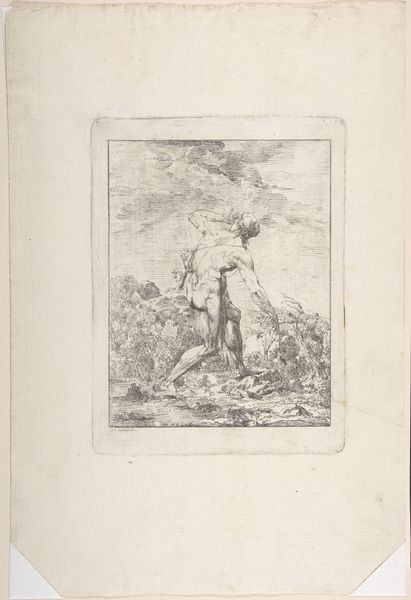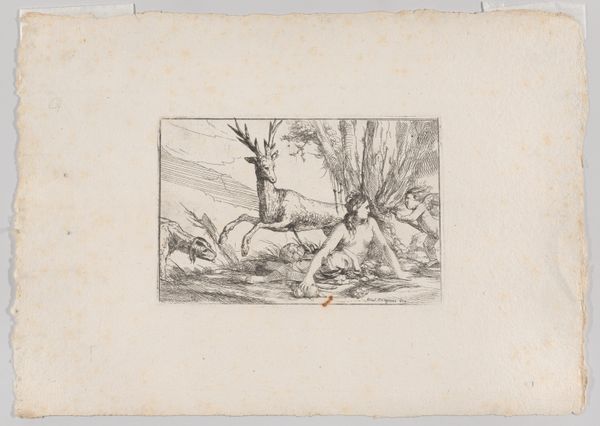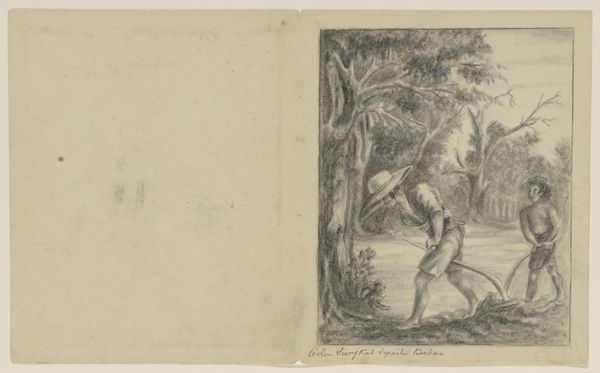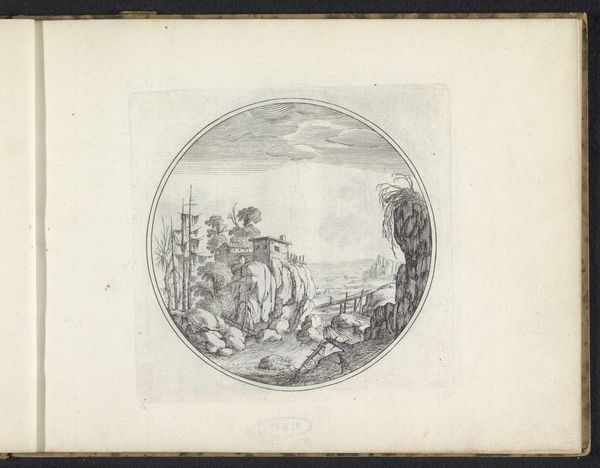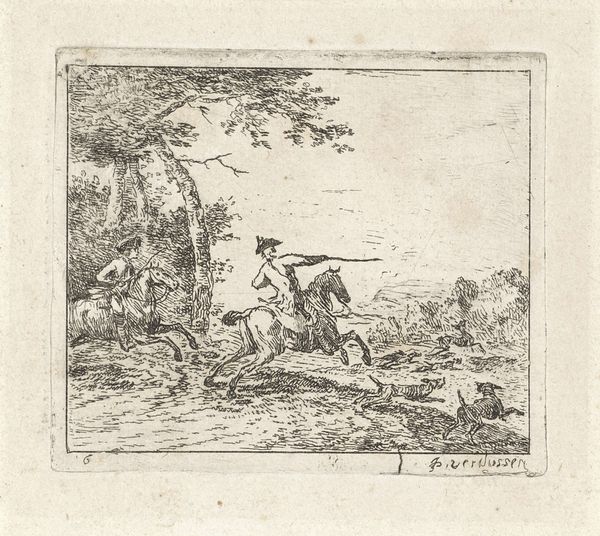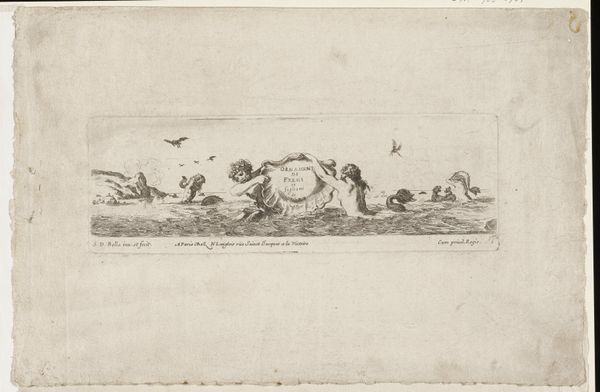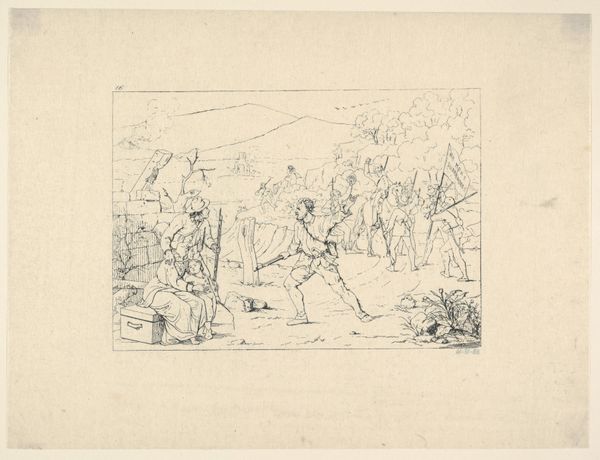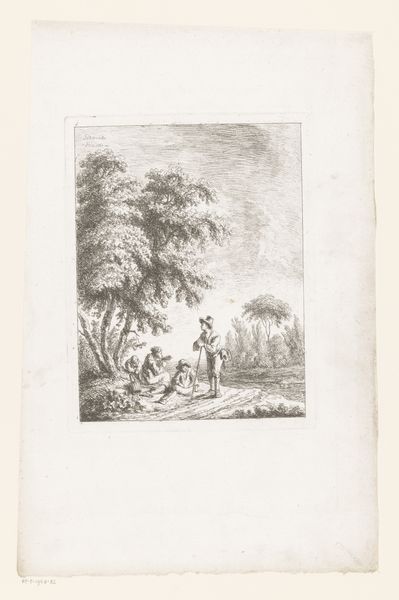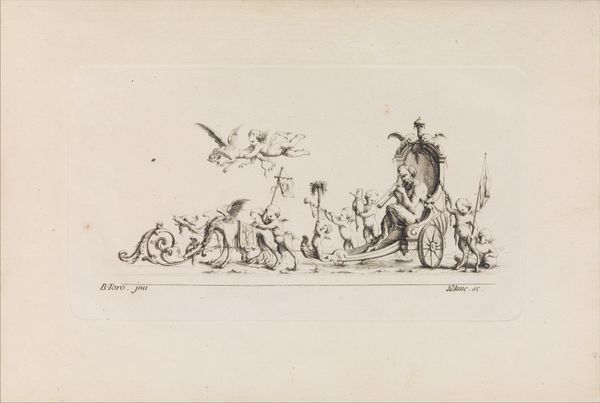
drawing, ink, pen
#
drawing
#
toned paper
#
light pencil work
#
quirky sketch
#
landscape
#
personal sketchbook
#
ink
#
sketchwork
#
ink drawing experimentation
#
romanticism
#
pen-ink sketch
#
sketchbook drawing
#
pen
#
genre-painting
#
history-painting
#
storyboard and sketchbook work
#
sketchbook art
Dimensions: height 244 mm, width 317 mm
Copyright: Rijks Museum: Open Domain
Editor: This pen and ink drawing, "Jacht op fazanten," or "Pheasant Hunting," by Alexandre-Gabriel Decamps, created around 1830, has a rather curious layout, doesn't it? Almost like studies for a larger piece, but self-contained. What strikes you most about it? Curator: What I find most compelling is the insight it offers into Decamps's artistic process and the material conditions that shaped his work. Consider the rapid, almost frantic, quality of the lines. This isn't about idealized representation. Editor: You mean like a quick sketch before committing to painting the image? Curator: Precisely! And that pen, that paper - cheap, accessible materials. He isn’t working with precious pigments or marble. Decamps, in utilizing easily available materials and favoring sketchwork, democratizes the very act of creation. Are we looking at hunting as sport for aristocracy, or as source of labor? Editor: I see your point! It’s more about the immediacy of capturing a fleeting moment and perhaps a bit about how such leisure came to be, rather than the glorification of the hunt itself. The means are speaking louder than the end goal? Curator: Absolutely. The emphasis on process – the ‘how’ – is paramount. It disrupts conventional art hierarchies by valuing the sketch, the preparatory stage, the "making of." Notice the light pencil work. Editor: So by focusing on the materials and process, we can see how Decamps challenges traditional notions of what constitutes 'high art.' I hadn't considered that before. Curator: And how that challenge speaks to the social and economic shifts of the time, democratizing production for broader consumption of both materials and message. Editor: Okay, now I am re-considering what hunting images generally represent in Art History... Thanks for widening my perception! Curator: Anytime! The true art is always in the making.
Comments
No comments
Be the first to comment and join the conversation on the ultimate creative platform.


